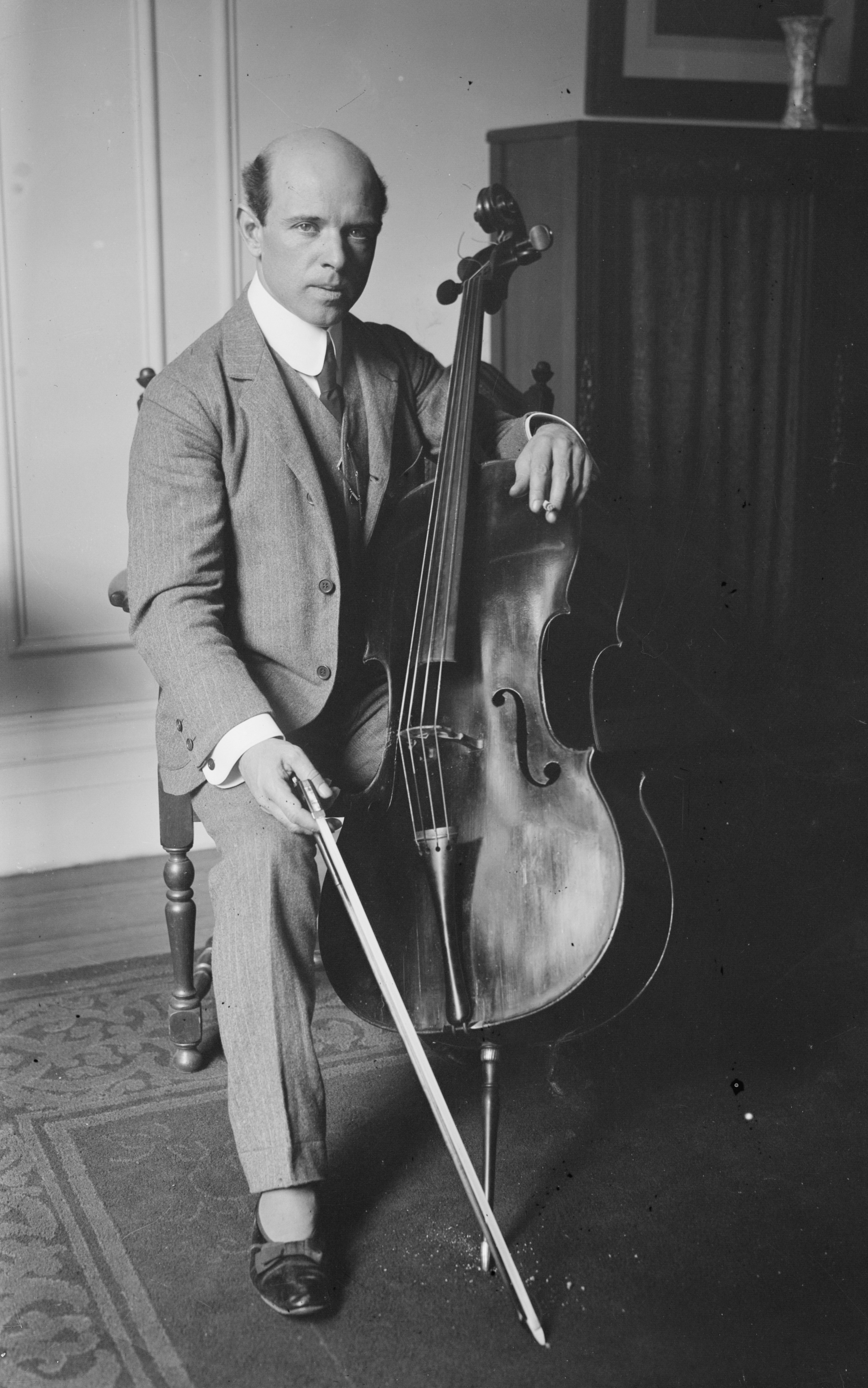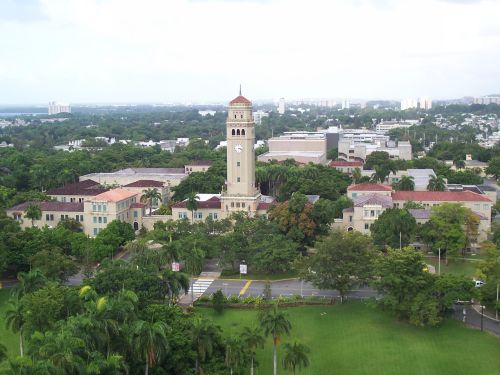|
Ramón M. Suárez Calderon
Dr. Ramón M. Suárez Calderón (1895–1981) was a scientist, cardiologist, educator and hematologíst whose investigations led him to identify the proper and effective treatment of a specific disease known as tropical sprue. He also refined the protocols for numerous diagnostic procedures, such as electrocardiography and radioisotope, for the clinical identification and treatment of the disease which causes heart rheumatism. Early years Suárez Calderon was born in the town of Loiza in Puerto Rico. His family moved to San Juan, the capital of Puerto Rico, where he received his primary and secondary education. He attended the Central High School of Santurce and studied medicine at the Medical College of Virginia in the United States. In 1917 he earned his medical degree and moved to the Dominican Republic, where he was hired as the medical physician at a sugar plantation. He returned to Puerto Rico in 1920, and in 1928 he was named Medical Director of San Juan's Munici ... [...More Info...] [...Related Items...] OR: [Wikipedia] [Google] [Baidu] |
Loíza, Puerto Rico
Loíza (Spanish pronunciation: ) is a Loíza barrio-pueblo, town and Municipalities of Puerto Rico, municipality on the northeastern coast of Puerto Rico, north of Canóvanas, Puerto Rico, Canóvanas; east of Carolina, Puerto Rico; and west of Río Grande, Puerto Rico. Loíza is spread over five barrios and Loíza barrio-pueblo, Loíza Pueblo (the downtown area and the administrative center of the city). It is part of the San Juan-Caguas-Guaynabo Metropolitan Statistical Area. It is renowned for its rich Afro–Puerto Ricans, Afro-Puerto Rican culture and heritage. History Some say its name comes from a female cacique, named Loaíza or Yuíza, who governed the region formerly called Jaymanío, on the shores of the Río Grande de Loíza. It is said that this cacique might have married a mulatto conquistador called Pedro Mejías, but there is no evidence of this. Other sources point to a Spanish people, Spanish landlord named Iñigo López de Cervantes y Loayza, who owned a lot of t ... [...More Info...] [...Related Items...] OR: [Wikipedia] [Google] [Baidu] |
Bailey Ashford
Colonel Bailey Kelly Ashford (September 28, 1873 – November 1, 1934) was an American physician who had a military career in the United States Army, and afterward taught full-time at the School of Tropical Medicine in Puerto Rico, which he helped establish in San Juan. A pioneering physician in the treatment of anemia, Ashford organized and conducted a parasite treatment campaign against hookworm while stationed in Puerto Rico. This cured approximately 300,000 persons (one-third of the Puerto Rico population) and reduced the death rate from associated anemia by 90 percent. He was a founding member of the Puerto Rico Anemia Commission. Early years Ashford was born in Washington D.C. as one of five children in the family of Francis Ashford, a prominent physician, and his wife. His general education was obtained at the public schools and at Columbian University in Washington D.C. (now George Washington University). In 1896, he graduated from the Georgetown University School o ... [...More Info...] [...Related Items...] OR: [Wikipedia] [Google] [Baidu] |
Isaac González Martínez
Dr. Isaac González Martínez (July 8, 1871 – April 20, 1954) was the first Puerto Rican urologist, and a pioneer in the fight against cancer throughout the island. Dr. González Martínez conducted many investigations and experiments in parasitology, bilharzia, leprosy and typhoid fever. Dr. González Martínez and Dr. Bailey K. Ashford were the founders of the first commission in Puerto Rico to study the causes of anemia. In 1914, he was named director of the biological laboratory of the sanitation service of Puerto Rico. In 1935, Dr. González Martínez founded The Puerto Rican League against Cancer. He also promoted the construction of Puerto Rico's first hospital specializing in oncology. Early years González Martínez was born in a coffee plantation in the town of Utuado in the central mountainous region of Puerto Rico. His family moved to the City of Mayaguez where he received his secondary education. González Martínez earned a teachers certificate from the Normal ... [...More Info...] [...Related Items...] OR: [Wikipedia] [Google] [Baidu] |
Bayamón, Puerto Rico
Bayamón (, ) is a city, municipality of Puerto Rico and suburb of San Juan located in the northern coastal valley, north of Aguas Buenas and Comerío; south of Toa Baja and Cataño; west of Guaynabo; and east of Toa Alta and Naranjito. Bayamón is spread over 11 barrios and Bayamón Pueblo (the downtown area and the administrative center of the city). It is part of the San Juan-Caguas-Guaynabo Metropolitan Statistical Area and the second most populous municipality in both the metropolitan area and Puerto Rico. History The Taíno people, the indigenous peoples who encountered European explorers and settlers, were the long-time settlers in this area. The Spanish colonist Juan Ramírez de Arellano established Bayamón as a Spanish settlement on May 22, 1772. Two theories exist about the origin of the name Bayamón. According to one, it was named after the local Taíno chief, ''Bahamon''. The other theory states the name was derived from the Taíno word ''Bayamongo'', ... [...More Info...] [...Related Items...] OR: [Wikipedia] [Google] [Baidu] |
Luis Muñoz Marín
José Luis Alberto Muñoz Marín (February 18, 1898April 30, 1980) was a Puerto Rican journalist, politician, statesman and was the first elected governor of Puerto Rico, regarded as the "Architect of the Puerto Rico Commonwealth." In 1948 he was the first democratically elected Governor of Puerto Rico, spearheading an administration that engineered profound economic, political and social reforms; accomplishments that were internationally lauded by many politicians, statesmen, political scientists and economists of the period. Muñoz Marín was instrumental in the suppression of the Nationalist Party and its efforts to gain independence. Early life and education Childhood Luis Muñoz Marín was born on February 18, 1898 at 152 Calle de la Fortaleza in Old San Juan. He was the son of Luis Muñoz Rivera and Amalia Marín Castilla. His father was a poet, publisher, and a politician, responsible for founding two newspapers, ''El Diario'' and ''La Democracia.'' Days before Luis ... [...More Info...] [...Related Items...] OR: [Wikipedia] [Google] [Baidu] |
Pablo Casals
Pau Casals i Defilló (Catalan: ; 29 December 187622 October 1973), usually known in English by his Castilian Spanish name Pablo Casals,Honors To Be Conferred On English Composers: Series of Concerts Devoted to modern Englishmen to be Given in London '''', 1911-04-09, retrieved 2009-08-01 was a Spanish and [...More Info...] [...Related Items...] OR: [Wikipedia] [Google] [Baidu] |
Tropical Sprue
Tropical sprue is a malabsorption disease commonly found in tropical regions, marked with abnormal flattening of the villi and inflammation of the lining of the small intestine. It differs significantly from coeliac sprue. It appears to be a more severe form of environmental enteropathy. Signs and symptoms The illness usually starts with an attack of acute diarrhoea, fever and malaise following which, after a variable period, the patient settles into the chronic phase of diarrhoea, steatorrhoea, weight loss, anorexia, malaise, and nutritional deficiencies. The symptoms of tropical sprue are: * Diarrhoea * Steatorrhoea or fatty stool (often foul-smelling and whitish in colour) * Indigestion * Cramps * Weight loss and malnutrition * Fatigue Left untreated, nutrient and vitamin deficiencies may develop in patients with tropical sprue. These deficiencies may have these symptoms: * Vitamin A deficiency: hyperkeratosis or skin scales * Vitamin B12 and folic acid deficiencies: anaem ... [...More Info...] [...Related Items...] OR: [Wikipedia] [Google] [Baidu] |
Anemia
Anemia or anaemia (British English) is a blood disorder in which the blood has a reduced ability to carry oxygen due to a lower than normal number of red blood cells, or a reduction in the amount of hemoglobin. When anemia comes on slowly, the symptoms are often vague, such as tiredness, weakness, shortness of breath, headaches, and a reduced ability to exercise. When anemia is acute, symptoms may include confusion, feeling like one is going to pass out, loss of consciousness, and increased thirst. Anemia must be significant before a person becomes noticeably pale. Symptoms of anemia depend on how quickly hemoglobin decreases. Additional symptoms may occur depending on the underlying cause. Preoperative anemia can increase the risk of needing a blood transfusion following surgery. Anemia can be temporary or long term and can range from mild to severe. Anemia can be caused by blood loss, decreased red blood cell production, and increased red blood cell breakdown. Cau ... [...More Info...] [...Related Items...] OR: [Wikipedia] [Google] [Baidu] |
Hookworm
Hookworms are intestinal, blood-feeding, parasitic roundworms that cause types of infection known as helminthiases. Hookworm infection is found in many parts of the world, and is common in areas with poor access to adequate water, sanitation, and hygiene. In humans, infections are caused by two main species of roundworm, belonging to the genera ''Ancylostoma'' and '' Necator''. In other animals the main parasites are species of ''Ancylostoma''. Species The two most common types of hookworm that infect humans are ''Ancylostoma duodenale'' and '' Necator americanus''. Hookworm species that are known to infect domestic cats are '' Ancylostoma braziliense'' and '' Ancylostoma tubaeforme''. Wild cats are infected by '' Ancylostoma pluridentatum''. Dogs are commonly infected by '' Ancylostoma caninum'', but may also be infected by '' Uncinaria stenocephala'' and ''Ancylostoma braziliense''. In Asia, '' Ancylostoma ceylanicum'' is endemic among dogs and cats and infects humans. ... [...More Info...] [...Related Items...] OR: [Wikipedia] [Google] [Baidu] |
North America
North America is a continent in the Northern Hemisphere and almost entirely within the Western Hemisphere. It is bordered to the north by the Arctic Ocean, to the east by the Atlantic Ocean, to the southeast by South America and the Caribbean Sea, and to the west and south by the Pacific Ocean. Because it is on the North American Plate, North American Tectonic Plate, Greenland is included as a part of North America geographically. North America covers an area of about , about 16.5% of Earth's land area and about 4.8% of its total surface. North America is the third-largest continent by area, following Asia and Africa, and the list of continents and continental subregions by population, fourth by population after Asia, Africa, and Europe. In 2013, its population was estimated at nearly 579 million people in List of sovereign states and dependent territories in North America, 23 independent states, or about 7.5% of the world's population. In Americas (terminology)#Human ge ... [...More Info...] [...Related Items...] OR: [Wikipedia] [Google] [Baidu] |
University Of Puerto Rico
The University of Puerto Rico ( es, Universidad de Puerto Rico, UPR) is the main public university system in the U.S. Commonwealth of Puerto Rico. It is a government-owned corporation with 11 campuses and approximately 58,000 students and 5,300 faculty members. UPR has the largest and most diverse academic offerings in the commonwealth, with 472 academic programs of which 32 lead to a doctorate. History In 1900, at Fajardo, the ''Escuela Normal Industrial'' (normal school) was established as the first higher education center in Puerto Rico. Its initial enrollment was 20 students and 5 professors. The following year it was moved to Río Piedras. On March 12, 1903, the legislature authorized founding of the University of Puerto Rico, and that day the "Escuela Normal" was proclaimed as its first department. In 1908, the Morrill-Nelson Act was extended to Puerto Rico, making the University a " Land Grant College," which authorizes the use of federal land to establish ... [...More Info...] [...Related Items...] OR: [Wikipedia] [Google] [Baidu] |


.jpg)
